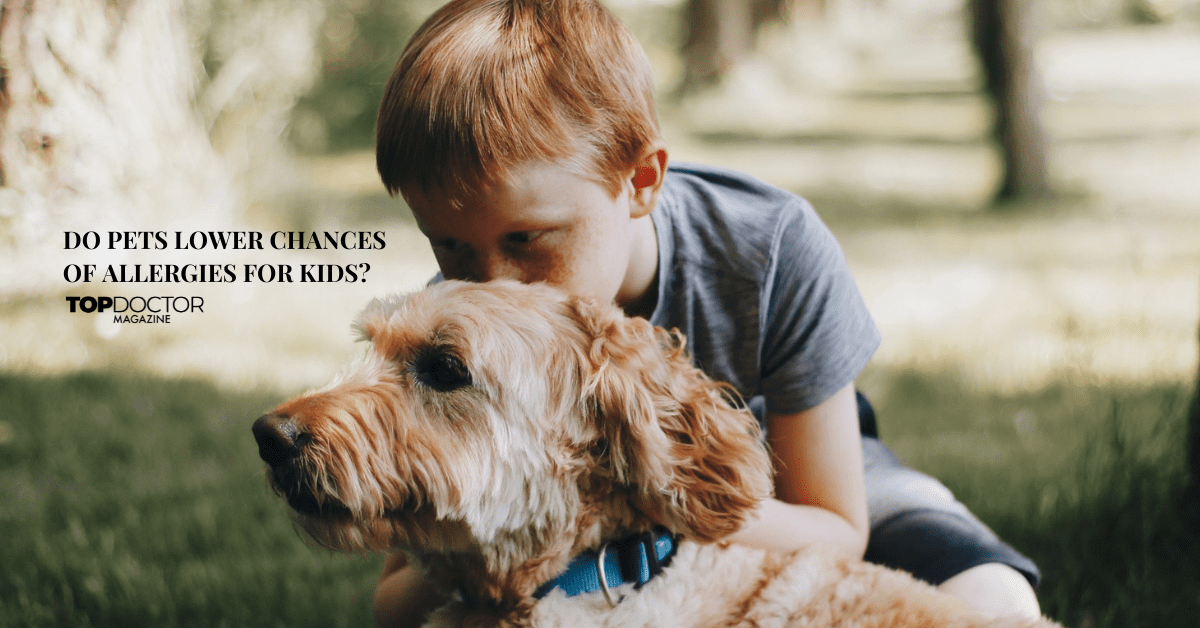Allergies are one of the worst things about spring, especially for parents trying to help their kids stay sane amidst the constant sniffling, sneezing, itching and coughing. They have the potential to ruin the advent of spring and cause children to avoid furry friends for fear of getting a stuffy nose or itchy eyes.
However, as strange as it may sound, recent research indicates that pets could be an effective way to prevent children from developing allergies!
What Causes Allergies?
Children’s allergies
No, it’s not your imagination; allergies are becoming increasingly common and have been on the rise since the 20th century. In children, they are often caused by various forms of tree and grass pollen, molds, dust mites, animal dander, foods, medicines and bee stings.
Just as various as the allergy causes are the symptoms they produce, such as:
- Sneezing;
- Stuffy noses;
- Red and itchy skin around the eyes;
- Asthma symptoms like coughs.
Most significantly, allergies can cause anaphylaxis when children are exposed to an allergen they are severely allergic to. The symptoms of anaphylaxis are:
- Difficulty breathing;
- Vomiting;
- Fainting.
Anaphylaxis is much more than a mere allergic reaction; it is a life-threatening condition that must be treated in kind. So, while most children’s allergies result in coughs, they can, in some instances, be life-threatening.
For most, however, children’s allergies aren’t severe, and home remedies often are an easy, cost-efficient and effective way to provide relief. Regarding chronic or severe allergies, doctors will often prescribe medication and over-the-counter antihistamine creams and lotions as the first line of defense.
At home, you can apply cool, wet cloths or add oatmeal or baking soda to your child’s bath to treat skin conditions. For sinus irritation and congestion from pollen, breathing steam from a bowl of warm water can help relax and relieve the sinuses.
Lastly, for an upset stomach, the first step is adjusting the diet to give your stomach a break. When feeling sick, try a bland diet of foods like rice, bananas and applesauce. Then, ensure you’re drinking lots of water and minimizing strong scents contributing to a nauseous stomach.
However, these remedies are only so effective. Instead, the best home remedy is early prevention. That is where the power of pets to prevent allergies comes in.
How Do Pets Reduce Allergies in Kids?
Strangely enough, the fact that pets cause allergies in adults is why they can help prevent allergies in kids. Pets often carry things that can spark an allergic reaction, like their dander. But in addition to their dander, pets also commonly carry microbes that stimulate our immune systems to learn how to better prepare for allergen exposure.
This is why having a friendly pet at home is about more than just having a playmate for your kid. Pets have been found to help prevent children from developing allergies, asthma or even eczema as they get older.
Several studies have backed this assertion. For example, a study of 1029 children found that 49% of those without pets in the home during early childhood had allergies, while 43% of those with one pet had allergies and only 24% of those with three pets had allergies. This study indicates a positive relationship between having pets at home and reducing the chance of your child developing allergies.
Additionally, this study indicates what the researchers term a dose-dependent relationship, meaning that the more a child is exposed to pets, the more likely they are not to develop allergies. That’s why having more pets at home significantly reduces the likelihood of allergies. One pet in a home has some effect, but depending on the pet’s personality, the child may or may not be exposed to them often. But with more than one pet, the chance of your child interacting with it significantly increases. This is why a child in a home with three pets is nearly 20% less likely to develop allergies than a child in a home with only one.
How Can I Use a Pet to Keep My Kid from Having Allergies?
Now that you’ve seen the evidence for how pets can effectively prevent allergies, you might be wondering how you can use this information to help your kids or future kids. The answer is early exposure. The earlier your children are exposed to pets, the more effective those pets will be at preventing allergy development. For example, newborns exposed to a pet were only 12% likely to develop a form of eczema and 19% to develop wheezing by their third birthday.
Moreover, researchers are increasingly asserting that pet exposure is critical to your child’s development of a robust immune system. In particular, researchers are focusing on how dogs impact the early development of children’s immune systems shortly after birth. Their results could shed light on how important having a pet is for strengthening your child’s immune system.
A Parting Reminder
Dogs, cats and other pets might not be the allergy magnets some people think they are. In fact, our furry friends might be the key to developing healthy immune systems that minimize allergies as kids grow up! So, if you’re looking to keep your child strong, healthy and allergy-free as they grow up, consider adding an animal friend or two to your home. Not only will they keep your kid company and provide a great playmate, but they might also keep the sniffles, itches and sneezes at bay!






0 Comments